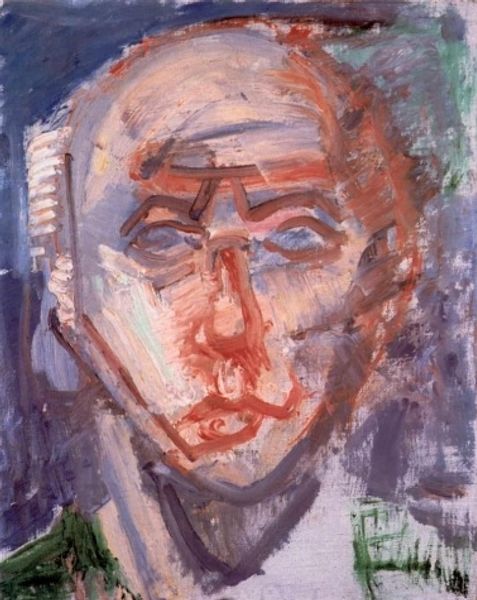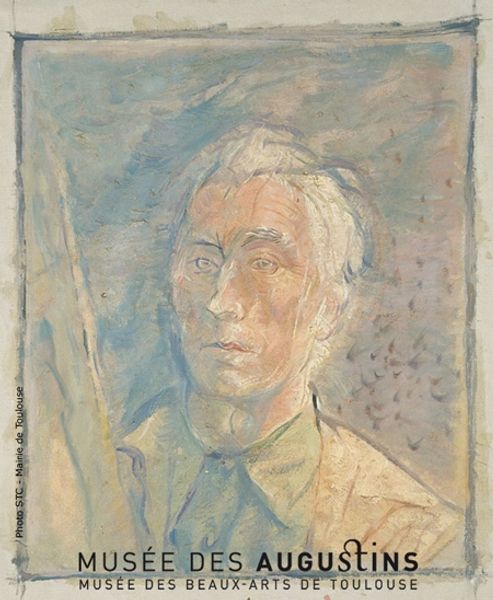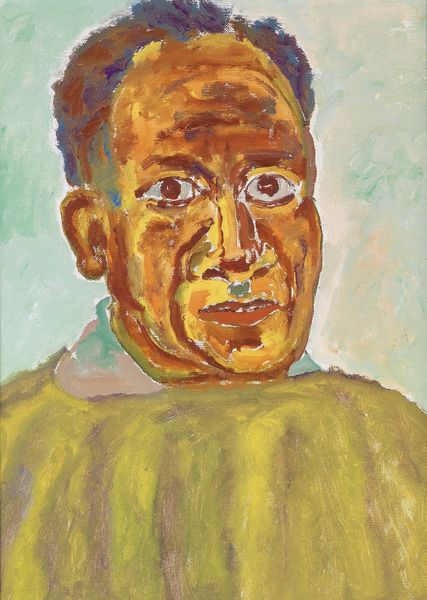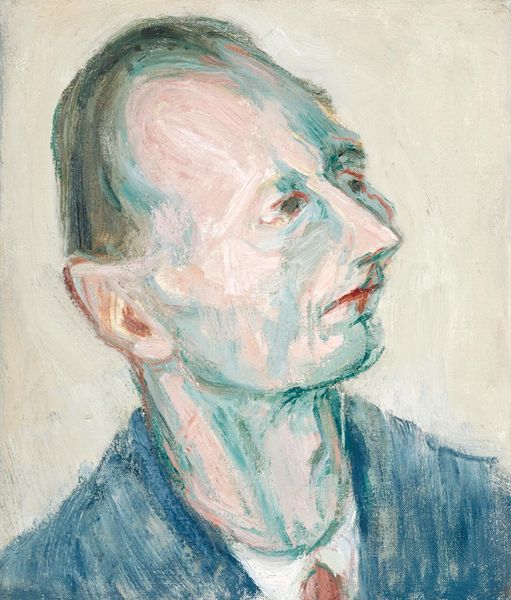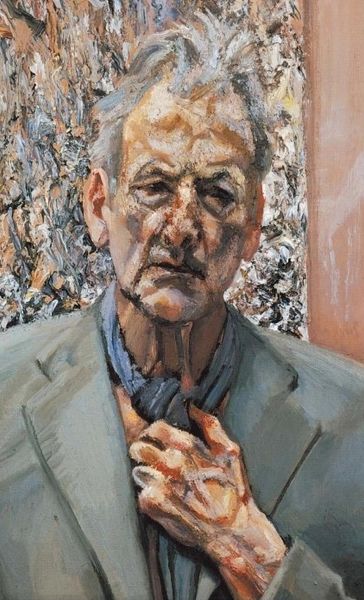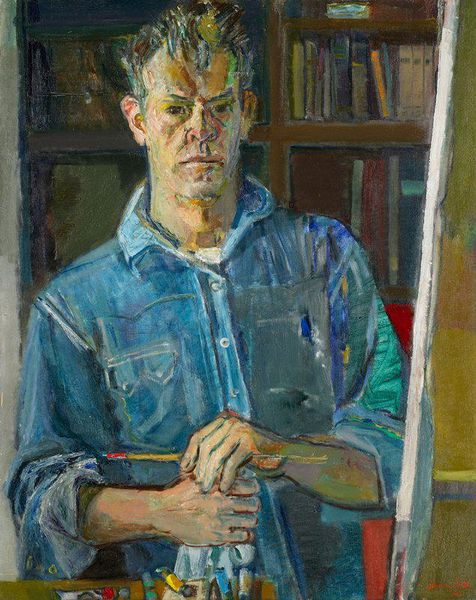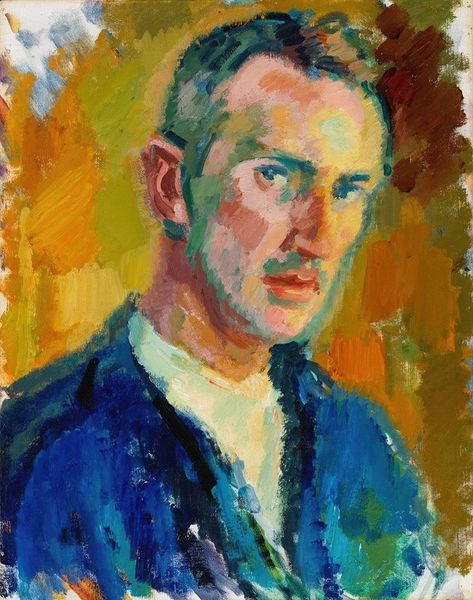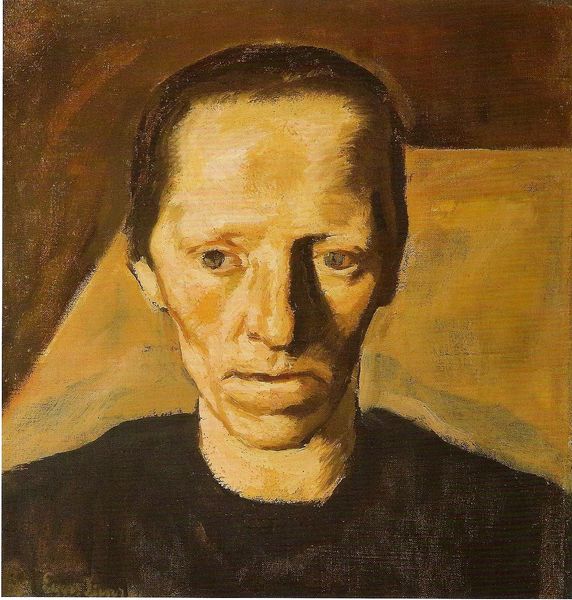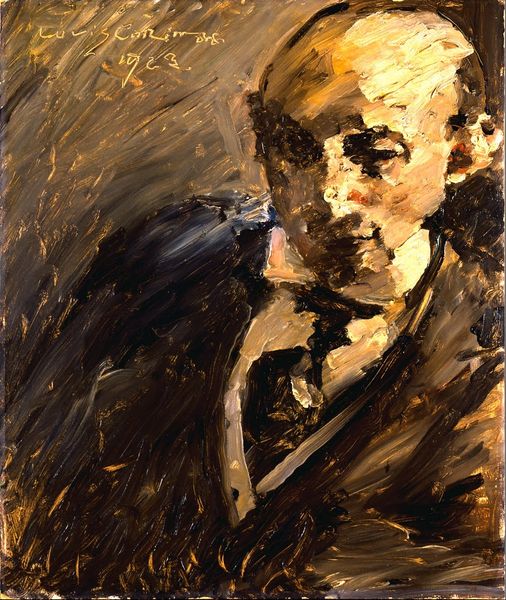
#
abstract expressionism
#
abstract painting
#
possibly oil pastel
#
oil painting
#
fluid art
#
acrylic on canvas
#
underpainting
#
paint stroke
#
painting painterly
#
expressionist
Copyright: Pierre Daura,Fair Use
Curator: Here we have Pierre Daura's "Untitled (Daura in blue and green shirt with cane)," created in 1971. Editor: There's a pensive quality to it. The sitter's downward gaze evokes a sense of quiet contemplation, doesn't it? Curator: It's a compelling work, a later piece for Daura. It utilizes a distinctive, expressionist style, which contrasts with the earlier more formal and structured paintings for which Daura initially achieved recognition. The composition emphasizes the interplay of color and brushwork, characteristic of the post-war American art scene where abstraction reigned supreme. Editor: Exactly! I think the blend of blues and greens does soften what might have been a severe image. Seeing it from our current vantage point, one might wonder about the cultural significance of depicting aging, vulnerability, or introspection in such a direct way, given the context of societal pressures on image. Curator: Daura's biography provides crucial insight. Exiled during the Spanish Civil War, later moving to America and struggling with professional obscurity, he lived with a changed perspective, the work emerging as a testament to personal resilience in the face of enormous geopolitical events. Editor: How did he use the figure in terms of line, space, and color, though, in relation to the abstract expressionism that was emerging at the time? It's clearly a figure study, yet it shares more with an action painting where brushstrokes become everything. The way that underpainting peeks through speaks of someone questioning modes of representation and even questioning how to "see" oneself in older age. Curator: Indeed, this departure into a painterly style came later in his career, and demonstrates the effect the political and socio-economical shifts that brought him to America had on him. He moves from his earlier social realist leanings in Paris and into what can now be easily considered expressionist portraiture, but retaining representational components, like the man’s button-down and his silver hair. Editor: This is far from passive observation; you can read resistance, sadness, or the questioning of self-identity right there on the surface. You realize that painting in this expressionistic mode was the perfect vehicle for the subject to reclaim himself and resist any traditional idea of representing oneself to others. Curator: Absolutely. By understanding this painting as situated within Daura's personal story and broader art historical contexts, it can really reveal more profound social, and existential commentaries. Editor: Precisely. Looking at it now, one recognizes it for more than its obvious aesthetic characteristics and is better able to recognize Daura’s social commentary about painting oneself into existence as an émigré in 1970s America.
Comments
No comments
Be the first to comment and join the conversation on the ultimate creative platform.
